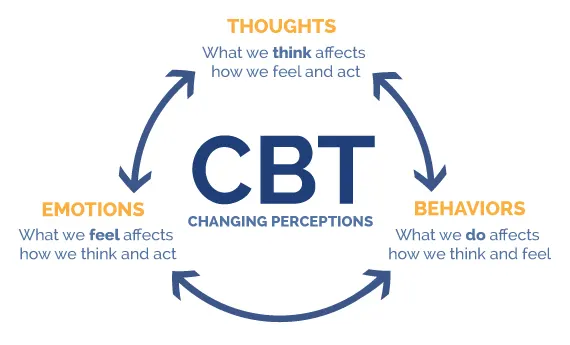In the fast-paced world of today, with its ever-changing social norms and rapid technological advancements, mental health therapy is changing dramatically. Novel strategies and state-of-the-art tools are starting to appear, providing fresh perspectives on the intricacies of mental health. This article examines these transformative therapies and offers insights into how they promote improved mental health by offering new viewpoints and resources.
- Online platforms and teletherapy: As digital connectivity has grown, these tools have become essential for growing mental health services. These platforms remove barriers based on location, allowing people to receive therapy in the convenience of their own homes. Virtual sessions are flexible enough to fit into hectic schedules and encourage accessibility for individuals who might otherwise find it difficult to access therapy. People can easily seek support by using technology, which promotes a more inclusive approach to mental health care.

- Virtual Reality (VR) Therapy: By generating immersive environments for therapeutic interventions, VR is transforming the way mental health care is provided. Virtual reality (VR) therapy is especially useful for treating disorders like PTSD, anxiety disorders, and phobias because it exposes patients to simulated, controlled environments. Through progressive exposure therapy, therapists assist patients in developing control and desensitization to triggers. Virtual reality therapy is a useful adjunct to conventional methods, providing a fresh and efficient way to deal with mental health issues.
- Artificial Intelligence (AI) in Mental Health Apps: The way people manage their well-being is changing as a result of the AI’s integration into mental health apps. These applications frequently include chatbots or virtual therapists that engage users through natural language processing. AI-driven solutions offer coping mechanisms, emotional support, and personalized insights through continuous dialogues. The stigma attached to seeking mental health treatment is lessened by the accessibility and anonymity these apps provide.
- Wearable technology and biofeedback: Together, these two technologies provide a concrete means for people to understand how their bodies react to stress. Skin conductivity, heart rate, and sleep patterns are just a few of the parameters that wearable technology, like smartwatches, can track. By being aware of these signs, people can become more adept at recognizing stressors and proactively managing their stress. Biofeedback fosters self-awareness through real-time data, empowering people to actively participate in their mental health journey.
- Neurofeedback Therapy: This type of biofeedback focuses on controlling brain activity to enhance mental health. People can learn to modulate their brain function through real-time brainwave monitoring. This therapeutic strategy has demonstrated promise in the treatment of disorders like depression, anxiety, and ADHD. Neurofeedback helps people gain more control over their cognitive processes by giving them immediate feedback on their brain activity. This opens the door for focused and successful interventions.
- Apps for Mindfulness and Meditation: The benefits of mindfulness and meditation for mental health have been widely acknowledged. These days, a number of apps provide stress-reduction techniques, mindfulness training, and guided meditation sessions. These apps accommodate a wide range of preferences by letting users select sessions according to their time constraints, desired teachers, or meditation objectives. Including mindfulness in everyday activities encourages emotional control and resilience, providing people with a doable strategy for improved mental health.
- Augmented Reality (AR) for Therapeutic Support: The use of augmented reality (AR) as a therapeutic support tool is becoming more common, especially in exposure therapy and mental health education. Augmented Reality (AR) creates interactive and captivating experiences by superimposing digital elements onto the real world. With the use of scenario simulation, people can gradually face and overcome their fears with the aid of technology. Through the provision of visually enhanced information about mental health conditions and coping strategies, augmented reality applications also improve psychoeducation by increasing accessibility and engagement of the learning process.
- Apps for Cognitive Behavioral Therapy (CBT): The well-respected therapeutic approach known as cognitive behavioral therapy is now available via mobile applications. These applications help users recognize and confront harmful thought patterns by guiding them through the fundamentals of cognitive behavioral therapy. Users can set goals, monitor their moods, and get feedback on how they’re doing. For those looking for evidence-based therapeutic interventions on their own terms, CBT apps are useful tools that enable users to take an active role in their mental health journey.

Conclusion
The ways that conventional methods and state-of-the-art technologies complement one another are becoming more and more clear as the field of mental health continues to change. While virtual reality, artificial intelligence, biofeedback, neurofeedback, and wearable technology offer individualized and cutting-edge interventions, teletherapy and online platforms democratize access to mental health care. Apps for cognitive-behavioral therapy, augmented reality, and mindfulness and meditation add to a wide range of resources that enable people to prioritize and improve their mental health.
Accepting these life-changing treatments creates the possibility of a time when mental health is not only valued but also easily incorporated into our everyday activities. The way that mental health therapy is developing demonstrates a dedication to using technology to improve people’s lives, lessen stigma, and promote proactive mental health practices. These innovative methods are reshaping the field of mental health care and have the power to fundamentally alter our understanding of, approaches to, and methods for promoting mental health in our dynamic, fast-paced society.
